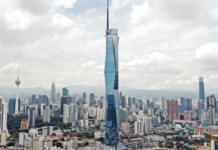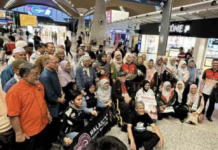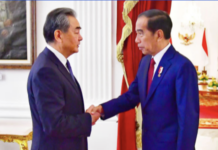TOKYO, July 18 — Although Covid-19 cases have reached record levels in the seventh wave of infections in Japan, the government currently has no plans to reimpose movement restrictions.
The resurgence also comes as Japan has been relaxing its border controls and started accepting foreign tourists on package tours.
With rising prices and inflation in the country, the government is seen to be cautious in taking drastic steps such as movement controls to bring the seventh wave under control.
Last Friday, the government’s Covid-19 response headquarters decided on key prevention measures that only included calls for people to get vaccinated and tested, and to ventilate spaces.
Prime Minister Fumio Kishida had said the government was not considering restricting people’s movement for now and it will maintain a balance of socio-economic activities and measures to keep infections from spreading further.
However, all eyes are now on whether the country’s medical system will be able to cope with the huge rise in the number of cases.
Japan’s daily Covid-19 cases reached a record 110,000 infections on Saturday, partly due to the highly transmissible BA.5 Omicron subvariant.
According to a Kyodo News report, cases dipped to over 105,500 new infections on Sunday, but it is still almost double from a week earlier and topping 100,000 for the third straight day.
The number of severe cases rose by 15 from a day earlier to 129 on Sunday.
The previous highest number of cases was on Feb 3, when about 104,000 infections were recorded during the sixth wave, but Japan has been seeing a resurgence since late June.
Health authorities said no infection peak was in sight, and there were concerns that the number of patients in serious condition and deaths could rise.
Compared with the highest totals of around 2,200 and 1,500 severely ill patients during the fifth and sixth infection waves, the current numbers are still low. However, fears remain that a further rise in infections could lead to ballooning numbers of serious cases.
Prefectures with the most number of cases on Saturday were Tokyo with 18,919 new cases, Osaka with 12,351, Kanagawa at 7,638 and Aichi with 7,269. There were 29 Covid-19 related deaths on Saturday.
“If the number of serious cases continues to increase, hospital bed vacancies may not be able to keep pace,” said Hironori Sagara, director of Showa University Hospital in Tokyo, which accepts patients with relatively severe Covid-19 symptoms.
The hospital had less than 10 severely ill patients in the first half of June, but the number has risen to around 20 this month.
Sagara said although the system of transferring patients to hotels or facilities once their symptoms subsided was working smoothly, it was only because most patients had mild to moderate symptoms.
“The situation will change in the future when people with underlying illnesses are hospitalised for longer periods. In order to manage this, we must make efficient use of the beds,” he added.
Tokyo reported almost 18,000 new infections on Sunday and hospital bed occupancy rates have surpassed 30 per cent, with over 2,000 people hospitalised as of July 12.
Kyodo News said Tokyo Gov. Yuriko Koike has ordered measures to reduce the number of deaths and severe cases.
These include increasing the number of rooms available at treatment facilities from 9,000 to 12,000 while maintaining socioeconomic activities.
It said the situation was even more serious in Okinawa as the island prefecture reported a record 4,165 new infections Sunday and the hospital bed occupancy rate stood at around 60 per cent.
Last Friday, Okinawa’s prefectural medical association told people not to go to hospital emergency departments for “light cold symptoms,” as the prefecture’s medical system was on the verge of collapse.
Their plea came after many patients flooded emergency departments complaining of high fevers.



















